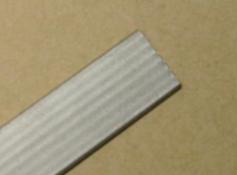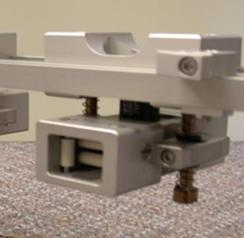Customer Problem
A manufacturer of extruded, thin-wall multi-void aluminum tubing used to manufacture automotive heat exchangers found that their product had an unacceptably high failure rate.
As part of their visual inspection method, a line operator monitored the flow of newly extruded material as it passed through a tank of cooling water using an overhead mirror to look for a telltale stream of bubbles. When bubbles were spotted spray paint was used to mark the area of concern after the material exited the tank. Since the tubing was moving at a pace close to 3-ft/second, many defects were not caught due to operator inattention.
The Solution
The manufacturer wanted to find through-wall pin holes sized 0.010″ or smaller that would allow refrigerant to leak. They explored options with NDT companies and then they decided to purchase an eddy current system in order to inspect 100% of their product. Using this system, tubing (shown in Figure 1) passed through a custom eddy current probe (Figure 2). Ceramic rollers and spring loaded guides helped ensure that the product was held close to the array of eddy current coils in the probe. Each probe assembly had a dedicated multi-channel eddy current test instrument.
In addition to finding through-wall pin holes, the eddy current system was able to identify restricted or plugged channels within the tube, and find Zinc coating splatter, surface cracks, laps and inclusions.



